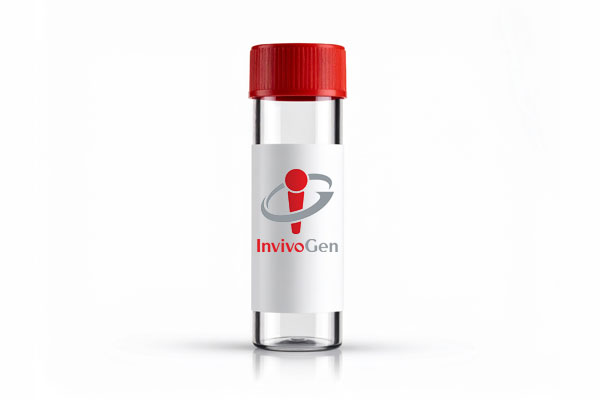Anti-hIL-10-hIgG1
-
Cat.code:
mab1-hil10NEW
- Documents
ABOUT
Recombinant anti-human IL-10 neutralizing antibody
Anti-hIL-10-hIgG1 is a monoclonal antibody (mAb) targeting the human interleukin-10 (IL-10). This mAb specifically blocks the binding between IL-10 to its receptor, validated using proprietary IL-10 reporter cells.
Anti-hIL-10-mIgG1 was previously extracted from hybridoma cells (clone 20G2). It is now expressed and produced in Chinese hamster ovary (CHO) cells, ensuring reliability and lot-to-lot reproducibility. This antibody can be used together with HEK-Blue™ IL-10 cells for screening and neutralization assays to block IL-10 signaling induced by recombinant human IL-10 (see figure).
Key features
- Each lot is functionally tested and validated.
- The complete sequence of the antibody construct has been verified.
- The absence of endotoxins is determined by the EndotoxDetect™ assay.
Interleukin 10 (IL-10) is the founding member of the IL-10 cytokine family. Despite its generally recognized anti-inflammatory properties, IL-10 has recently been implicated in disease exacerbation in systemic lupus erythematosus (SLE), challenging its conventional characterization.
All products are for research use only, and not for human or veterinary use.
SPECIFICATIONS
Specifications
IL-10
Human
Neutralization assay (tested)
ELISA
Sodium phosphate buffer, glycine, saccharose, stabilizing agents
Negative (tested using EndotoxDetect™ assay)
Each lot is functionally tested and validated.
CONTENTS
Contents
-
Product:Anti-hIL-10-hIgG1
-
Cat code:mab1-hil10
-
Quantity:100 µg
Shipping & Storage
- Shipping method: Room temperature
- -20 °C
- Avoid repeated freeze-thaw cycles
Storage:
Caution:
Details
Interleukin 10 (IL-10) is the founding member of the IL-10 cytokine family, which comprises IL-10, IL-19, IL-20, IL-22, IL-24, IL-26, IL-28A (IFN-λ2), IL-28B (IFN-λ3), and IL-29 (IFN-λ1) [1]. IL-10 was originally depicted as a key mediator of anti-inflammatory responses.
Upon binding of IL-10, the IL-10Rα chain oligomerizes with the IL-10Rβ chain. This, in turn, allows the phosphorylation of JAK1 (Janus kinase 1) and TyK2 (Tyrosine kinase 2), and the subsequent activation of STAT3 (Signal transducer and activator of transcription 3) [1]. Importantly, STAT3 is also activated downstream of other cytokine receptors. How the cells trigger distinct and specific gene expression in response to cytokine signaling through the same transcription factor is not fully understood yet [1].
Despite its generally recognized anti-inflammatory properties in various autoimmune malignancies, the involvement of IL-10 in systemic lupus erythematosus (SLE) remains controversial. Some reports affirm that the cytokine is positively associated with SLE disease activity, while others do not support this relationship [2]. Recent evidence suggests that it may exacerbate SLE by promoting B cell proliferation, class switching, and differentiation into autoreactive plasma cells, thereby contributing to disease progression [2]. The study drug BT-063, an IL-10–targeting antibody, is currently being investigated for its potential to counteract the pathogenic effects of IL-10 in SLE (NCT02554019) as well as diminish IL-10's supposedly suppressive function in the TME [3].
1. Saraiva M, et al., 2019. Biology and therapeutic potential of interleukin-10. J. Exp. Med. doi: 10.1084/jem.20190418.
2. Richter P, et al., 2025. IL-10 in Systemic Lupus Erythematosus: Balancing Immunoregulation and Autoimmunity. Int J Mol Sci. 26(7):3290.
3. Labadie KP, et al., 2023. Production of an interleukin-10 blocking antibody by genetically engineered macrophages increases cancer cell death in human gastrointestinal tumor slice cultures. Cancer Gene Ther. 30(9):1227-1233.
DOCUMENTS
Documents
Technical Data Sheet
Safety Data Sheet
Validation Data Sheet
Certificate of analysis
Need a CoA ?





